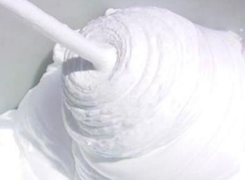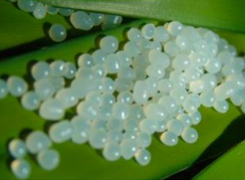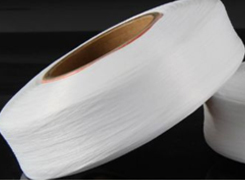Polyurethane : The Transformer in...
It can be very soft, very hard, or semi soft and semi hard. It can be sound insulation, heat insulation and deformation. The diversity and flexibility of polyurethane have brought a lot of space for material scientists to imagine and create.
Polyurethane (PUR) materials are a kind of organic polymer materials gradually emerging in recent years. It is prepared by the reaction of dimer or trimer of isocyanate with polyol. It is a kind of macromolecular compounds with repeated carbamate structural units in the main chain. According to different formulations and preparation methods, different polyurethane materials can be prepared, including rigid foam, soft foam, semi rigid foam, elastic fiber, adhesive, coating, spandex and so on. Polyurethane compounds usually have the characteristics of wear resistance, foaming, solvent resistance, low temperature resistance, adhesion, biological aging resistance and so on. They can be widely used in many fields such as construction, aviation, medical and health care, household appliances, transportation, new energy, environmental protection and so on. At present, they are also a kind of organic polymer materials with the largest variety and the widest application among polymer materials.
China began to study polyurethane technology in the 50s of last century. In 70s, rigid polyurethane foam began to industrialize. In 80s, polyurethane industry began to develop rapidly after introducing polyurethane continuous foaming technology from Japan and Italy. In 2017, the global annual output of polyurethane materials was about 9 million tons, and the annual production capacity of polyurethane in China was about 3.5-3.6 million tons, accounting for 40% of the global production capacity, which has become the main production base of polyurethane materials.
In terms of material application, polyurethane seems to be an ordinary foaming material, but it can be said that it is recognized as the best building thermal insulation material at present. Polyurethane has excellent properties such as light weight, low thermal conductivity, good heat resistance, aging resistance, easy adhesion and no molten droplets during combustion. In particular, the thermal conductivity can reach 0.017 ~ 0.024 w / m · K. It is a material with the lowest thermal conductivity among organic and inorganic thermal insulation materials. It can be widely used in roofs, walls, ceilings, floors, doors and windows of buildings. According to relevant data, the use of 1m3 polyurethane insulation material can reduce CO2 emission by 270Kg per year. Based on the consumption of 1 million tons of polyurethane insulation materials in one year, the CO2 emission can be reduced by 7 million tons in one year. It can be seen that the popularization and application of polyurethane insulation materials in the field of building energy conservation plays a very important role in improving global air quality.
In terms of material application, polyurethane seems to be an ordinary foaming material, but it can be said that it is recognized as the best building thermal insulation material at present. Polyurethane has excellent properties such as light weight, low thermal conductivity, good heat resistance, aging resistance, easy adhesion and no molten droplets during combustion. In particular, the thermal conductivity can reach 0.017 ~ 0.024 w / m · K. It is a material with the lowest thermal conductivity among organic and inorganic thermal insulation materials. It can be widely used in roofs, walls, ceilings, floors, doors and windows of buildings. According to relevant data, the use of 1m3 polyurethane insulation material can reduce CO2 emission by 270Kg per year. Based on the consumption of 1 million tons of polyurethane insulation materials in one year, the CO2 emission can be reduced by 7 million tons in one year. It can be seen that the popularization and application of polyurethane insulation materials in the field of building energy conservation plays a very important role in improving global air quality.
In terms of material application, polyurethane seems to be an ordinary foaming material, but it can be said that it is recognized as the best building thermal insulation material at present. Polyurethane has excellent properties such as light weight, low thermal conductivity, good heat resistance, aging resistance, easy adhesion and no molten droplets during combustion. In particular, the thermal conductivity can reach 0.017 ~ 0.024 w / m · K. It is a material with the lowest thermal conductivity among organic and inorganic thermal insulation materials. It can be widely used in roofs, walls, ceilings, floors, doors and windows of buildings. According to relevant data, the use of 1m3 polyurethane insulation material can reduce CO2 emission by 270Kg per year. Based on the consumption of 1 million tons of polyurethane insulation materials in one year, the CO2 emission can be reduced by 7 million tons in one year. It can be seen that the popularization and application of polyurethane insulation materials in the field of building energy conservation plays a very important role in improving global air quality.
As a transformer in the material industry, polyurethane plays an important role in the application of automobile. The amount of polyurethane foam used in a household car can reach 15 kilograms - 18 kilograms. In addition, there are many special shaped connectors and lightweight structural products. Polyurethane materials will also be used. As the automotive industry ushers in great changes such as new energy, automatic driving and vehicle networking, automotive polyurethane materials will also usher in greater development space. In addition, due to its good wear resistance and elasticity, polyurethane is a commonly used plastic runway material, but due to its poor heat aging performance, it has become the protagonist of the news of "toxic runway".
 |
 |
 |
 |